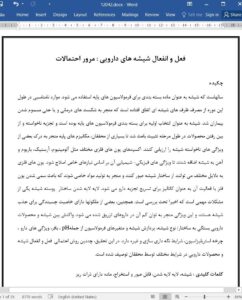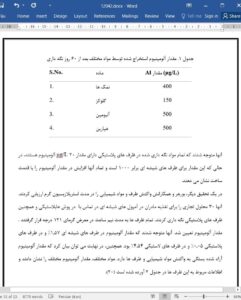Abstract
Glass is used as packaging material for parenteral formulation from years. Various untoward occurrences have observed over the period of time with glass containers which leads to therapeutic failures or even toxicity to the patients. Glass has been the primary choice for packaging of parenteral formulations, unexpected degradation or product losses during stability have forced many researchers to evaluate the underlying mechanisms leading to a larger understanding of some of the untoward properties of glass. Oxides of various metal ions viz. aluminium, arsenic, barium, iron etc. are added in glass to modify its physicochemical properties based on specific requirements. Metal ions could leach from the glass structure due to several reasons and could lead to generation of particulate matter, could cause metal ion toxicity or act as catalyst to hasten drug degradation. Delamination or formation of glass flakes is one of the major problems currently under high scrutiny by the regulators. Similarly, some molecules have an affinity to adsorb to glass leading to a low potency in the administered drug. Interaction between glass and drug product depends upon composition/type of glass, processing of glass and formulation variables such as pH, buffer, properties of drug, sterilization cycles, storage conditions etc. This review describes several possible means of interaction of glass and drug product encountered by researchers under a gamut of conditions.
INTRODUCTION
Wide ranges of packaging material are being used for different types of dosage forms. Selection of packaging material mainly depends on: Type of dosage form
Mode of application
Physico-chemical properties of formulation being packed into
Physico-chemical properties of material being used for packaging
Regulatory requirements also vary with the intended application of the drug product like for e.g., packaging for parenteral products poses stringent regulatory requirements since sterility is a major concern there [1]. FDA also recommends specific quality controls and requirements of packaging components based on intended use of dosage forms. Glass containers have been widely used for packing of parenteral preparations since many years.
CONCLUSION
Glass is the most widely used packaging material for parenteral formulations. Glass has been used since a long time in the pharmaceutical industry, significant amount of research and studies are available which indicate the advantages as well as the disadvantages of glass. Lot of data is available which indicates the probable mechanisms of interaction of glass with drug products and such data should be utilized to predict possible adverse interactions so as to enable alternative choices of packaging material or make amendments in the glass type or the formulation. Although we have discussed certain incompatibilities and interactions of the product with glass, it still remains the preferred choice as compared to other packaging materials due to its comparative inertness as well as processing ease for parenteral formulations. Thus, despite the potential for glass to interact, it is a good material of construction for primary containers for parenteral formulations if formulation scientists evaluate and eliminate possible interactions early in the formulation development phase.











